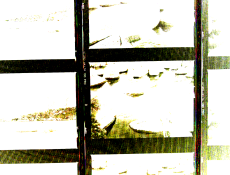I'm new-ish to film, I've been doing it for a year or more now. I've gone through about 50 rolls. I've been shooting with digital as a hobby for 7 or so years.
I can't forget about metering because the camera doesn't have an automatic mode. It's a Mamiya 645 1000s. The prism view finder has a meter but I never use it since it adds too much weight when hiking (and at its age I can't imagine it being more accurate than a dedicated meter or an app). So, I stick to the waist level view finder. At this point would automatic be an improvement anyway? Don't automatic modes function the same way as say taking an average reflective reading of the entire scene and spitting out settings. Mostly what I'm doing now minus the metering app "middle-man".
I'll make a note to keep the sky to about 1/3rd the frame.
I'm confusd or miss understanding something, when you talk about using the film at EI 200. If meter the film for 200, wouldn't I want to pull development?
Or are you saying meter at EI 200 or 320 or whatever I may choose and develop it "normally" (In the case of Delta 400 @ 400 ISO w/Ilford DD-X, it'd be 8 minutes)? And in this case it'd be pushing...
I tend not to shoot facing the sun. I do have cases where I want something that puts the sun in dangerously close to causing glare and exposure issues but I do my best to compensate for it. And as I've mentioned before when I'm shooting in the snow I'll add two stops of light based off what I'm metering it at. Perhaps I want to compensate with 3 stops for snowy landscapes? I'll also add maybe a stop or so in other bright/reflective conditions.
In summary my development method sounds similar to yours. I use Ilford DD-X, I like the results I get with it and it's what Ilford recommends. I pour in the developer (1:4 solution) and agitate for the intial 10s (slow rotatons/inversions) then for each minute of development I do another 10s of inversions. Then ~10s before development ends I slowly dump out the developer. I never reuse the developer.
When you add 30% time to your developement, how greatly does it affect the grain/tones, do you notice a large increase in grain or modest/none? I don't mind grain, but I don't want a whole lot in my landscapes (I know there's going to be some especially with 400 film).
I suppose I could do half of box or maybe 320 and in this case I could still develop normally as if it were 400 (For DD-X it's 8mins) and see some increased contrast, no?
I'll check out that link you gave me.
I wasn't sure how best to share the negatives/scans/prints as any method would add additional unrelated variables (digital camera, scanner, computer screen settings, etc). In any case I'll share with you the negative-scan-print of the photos that "
worked", "
Kind of Worked" and "
Didn't work as intended" (from the perspective of the final darkroom print not what I can get via a scan + Lightroom).
First image in each album is the negative itself, second image is the unadjusted scan using an Epson v600, third image is a darkroom print of the image. Hopefully this all makes sense and you can get an idea of what I'm doing.
Worked: Clean grain, I like the tones, not too had to print nicely (in my opinion)
Later Afternoon, sunny - Delta 100 @ 100 F32 1s (no filter)
Sample 1 Photos (No darkroom print just yet)
Mid Afternoon, mostly sunny - Delta 400 @ 400 [Lost the settings on this one] (Red Filter #25 - 3 Stops added, Snow 2-3 Stops Added)
Sample 2 Photos
Mid morning, partly cloudy - Delta 400 @ 400 F16 1/60 (Red Filter #25 - 2 Stops added)
Sample 3 Photos
Kind of Worked: Not too grainy (but some), I like the tones for the most part, not too hard to print (in my opinion)
Early Sunset, mostly sunny - Delta 400 @ 400 F8 1/60 (Red Filter #25 - 3 Stops added)
Sample 4 Photos
Didn't Work as Intended: Really Grainy and harsh looking, hard to print (in my opinion)
Early Morning, partly cloudy - Delta 400 @ 400 F16 1/15 (Red Filter #25 - 3 Stops Added, Snow 2 Stops Added)
Sample 5 Photos







 !
!
 ?
?